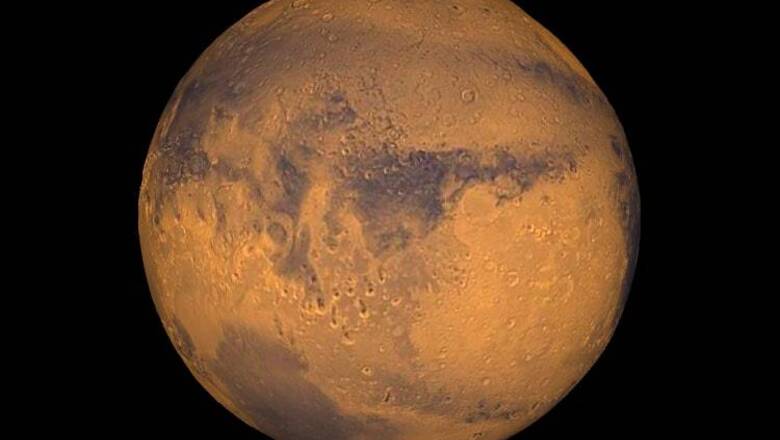
views
New York: Mars' largest moon, Phobos, is slowly falling towards the planet, and in about 10-20 million years, the moon will get so close that it will be shredded into a ring like the cones encircling Saturn, Jupiter, Uranus and Neptune, researchers, including one of Indian-origin, have estimated.
Tushar Mittal and Benjamin Black from the University of California - Berkeley wanted to know what processes a moon might undergo as it moves inward toward a planet.
"While our moon is moving away from the Earth at a few centimetres per year, Phobos is moving toward Mars at a few centimeters per year, so it is almost inevitable that it will either crash into Mars or break apart," Black said.
Only one other moon in the solar system, Neptune's largest moon Triton, is known to be moving closer to its planet.
The researchers projected that though inevitable, the demise of Phobos is not imminent and the ring will persist for anywhere from one million to 100 million years.
Estimating the cohesiveness of Phobos, they concluded that it is insufficient to resist the tidal forces that will pull it apart when it gets closer to Mars.
Dismembering it is analogous to pulling apart a granola bar - scattering crumbs and chunks everywhere, Black said.
The resulting rubble from Phobos - rocks of various sizes and a lot of dust - would continue to orbit Mars and quickly distribute themselves around the planet in a ring.
While the largest chunks would eventually spiral into the planet and collide at a grazing angle to produce egg-shaped craters, the majority of the debris would circle the planet for millions of years until these pieces, too, drop onto the planet in 'moon' showers, like meteor showers, the study pointed out.
To estimate the strength of Phobos, Black and Mittal looked at data from similarly fractured rocks on Earth and from meteorites that struck Earth and have a density and composition similar to Phobos.
The study appeared online in the journal Nature Geoscience.

















Comments
0 comment